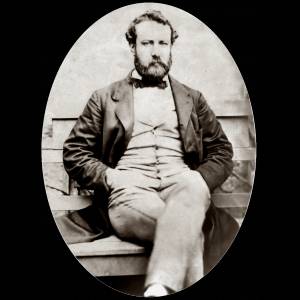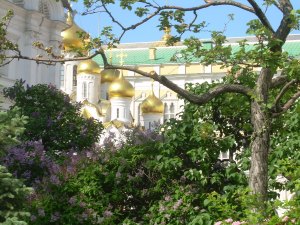 Jules Verne’s Mikhail Strogoff
Jules Verne’s Mikhail Strogoff
Translated by Stephanie Smee, illustrated by David Allan
Limited edition, first published 2016:
ISBN 9780994234001, 337 pages, RRP $55
The first English translation in over a hundred years of one of the best adventure novels of all time, written by one of the most popular writers of all time: Jules Verne’s Mikhail Strogoff.
First published in French in 1876 as Michel Strogoff, it is a rip-roaring tale of adventure and suspense, painted with romance and humour and set in pre-revolutionary Russia. Suitable for both adult and young readers from 11 and up, it is a book that’s inspired countless film and TV adaptations all over the world.
In France, it’s been a huge success from the word go, and has never been out of print, with most people considering it to be Verne’s best novel. But it has dropped out of sight in English-speaking countries as the original English translation–published well over a century ago!–is rather stodgy and dated for modern tastes.
But in award-winning translator Stephanie Smee’s perfectly-pitched, lively translation of the original 1876 French text, the first such translation in over a hundred years, English-speaking readers can discover for themselves just why this novel has such an enormous following not only in France but all over the world.
Stephanie is a Sydney-based translator who turned in a legal career to combine her true loves of literature and French. She is responsible for introducing the enormously successful works of much-loved French author, the Countess de Ségur, to a whole new generation of English-speaking children. You can find out more about Stephanie at Our Authors page.
To celebrate this major publishing event in 2016, we produced a beautiful collectible hand-numbered limited edition of only 750 copies, illustrated with coloured end papers and delicate black and white drawings scattered throughout. Special features: Hardcover, with cover made of textured red wibalin, with inset full colour cover illustration, and gold foil lettering on front and spine. Gold edges on pages, royal blue satin bookmark.
And to whet your appetite for this amazing book, read on on for a plot summary, as well as a peek at the first four pages of the book!
It is pre-revolutionary Russia. The Tsar is entertaining at the New Palace in Moscow. But despite outward appearances of peaceful glamour at the ball, trouble is brewing in the far-flung corners of the Russian Empire.
The Tsar’s brother, the Arch-Duke, finds himself isolated in the eastern Siberian town of Irkutsk as massive Tartar armies invade Russian territory in an uprising led by treacherous Russian officer, Ivan Ogareff.
The Tsar becomes aware that Ogareff is planning to infiltrate the Arch-Duke’s court in Irkutsk, first ingratiating himself into his services, before turning the city over to the invading Tartars in a dastardly act of vengeance.
But the sole means of communication by which the Tsar might warn his brother of Ogareff’s plot – a single telegraph wire between Moscow and Irkutsk – has been cut.
The Tsar’s only option is to send a courier from his Special Courier Corps overland, across thousands of kilometres of Russian territory, from Moscow to eastern Siberia.
The courier must reach the Arch Duke before Ogareff himself reaches Irkutsk.
That courier is Mikhail Strogoff…
It would have been a fairly simple task to let the actions and landscape speak louder than the words of the characters, but Verne’s protagonists are drawn with depth and humour. We learn of Strogoff’s upbringing, his relationship with his aging mother, the torment he suffers when he has to pass through his home town without revealing his true identity and the nature of his mission to a soul, not even his mother.
There is romance, too, as Verne develops a subtle relationship between Strogoff and Nadia, a Latvian girl determined to be reunited with her father who has been exiled as a political prisoner to Siberia. Together they face the perils of the Russian landscape, no less threatening than the rebellious Tartars.
The interaction between two war correspondents, Harry Blount (an Englishman) and Alcide Jolivet (a Frenchman), both in Russia reporting for their respective newspapers, is also a lot of fun, allowing Verne to fill in any necessary background gaps for the reader, while also providing comic relief.
The narrative is driven along at a cracking pace with a stunning twist that will catch most readers unawares, until ultimately it is resolved amidst scenes of fire and ice.
Below you can see and read the first four pages of the book, to get a feel for the fantastic scene-setting, Stephanie’s wonderful translation, and David’s atmospheric illustrations!







Could you please advise price of book,thankyou.
Regards,
John
LikeLike
Hi John, the special limited edition of the book(which is what is being offered through the crowdfunding campaign, and will also be offered later as a pre-order through our website) is AUD $55 post included, for Australia and New Zealand, and AUD $75, post included, for all other countries. After publication the limited edition will be more expensive–$60 and $80 respectively. The paperback which will be released later will retail for around AUD $24.99
If you’d like to order the limited edition through the crowdfunding campaign, you can go to https://www.indiegogo.com/projects/eagle-books-present-jules-verne-s-mikhail-strogoff
Or else you can order it directly through publisher@eaglebooksadventure.com and we can let you know payment details.
best wishes, Sophie Masson, for Eagle Books
LikeLike
Pingback: Writer Unboxed » Dream Come True: Bringing a Great Classic Back to Life | Hey Sweetheart, Get Me Rewrite!
Pingback: The journey of Mikhail Strogoff | Feathers of the Firebird
Pingback: Speaking in Tongues: a guest post by Sophie Constable | Feathers of the Firebird
Pingback: Speaking in Tongues – Dogeared
Pingback: Looking forward to the HNSA Conference: interview with Elisabeth Storrs | Feathers of the Firebird
Hello, I was interested in buying this when it came out and had contacted the translator asking for a sample of the first few pages, so I could compare her work to the original French, but she never replied. I’m very grateful you published this. More than anyone else, Verne has been absolutely murdered by past translators. Please, provide a sample. This is a lot of money for a translation I can’t even look at.
Thanks,
David
LikeLike
Hello David, sorry for the delay in replying. We’ll put up a short sample on the Mikhail Strogoff page on our Eagle Books website, http://www.eaglebooksadventure.com. It will only be a page or two however.
LikeLike
Pingback: Physical journeys in fiction–my latest post on Writer Unboxed | Feathers of the Firebird
Pingback: Looking forward to the 2021 HNSA Conference! | Feathers of the Firebird